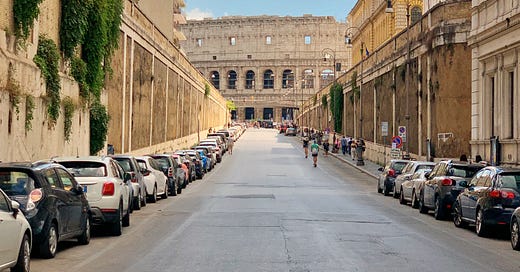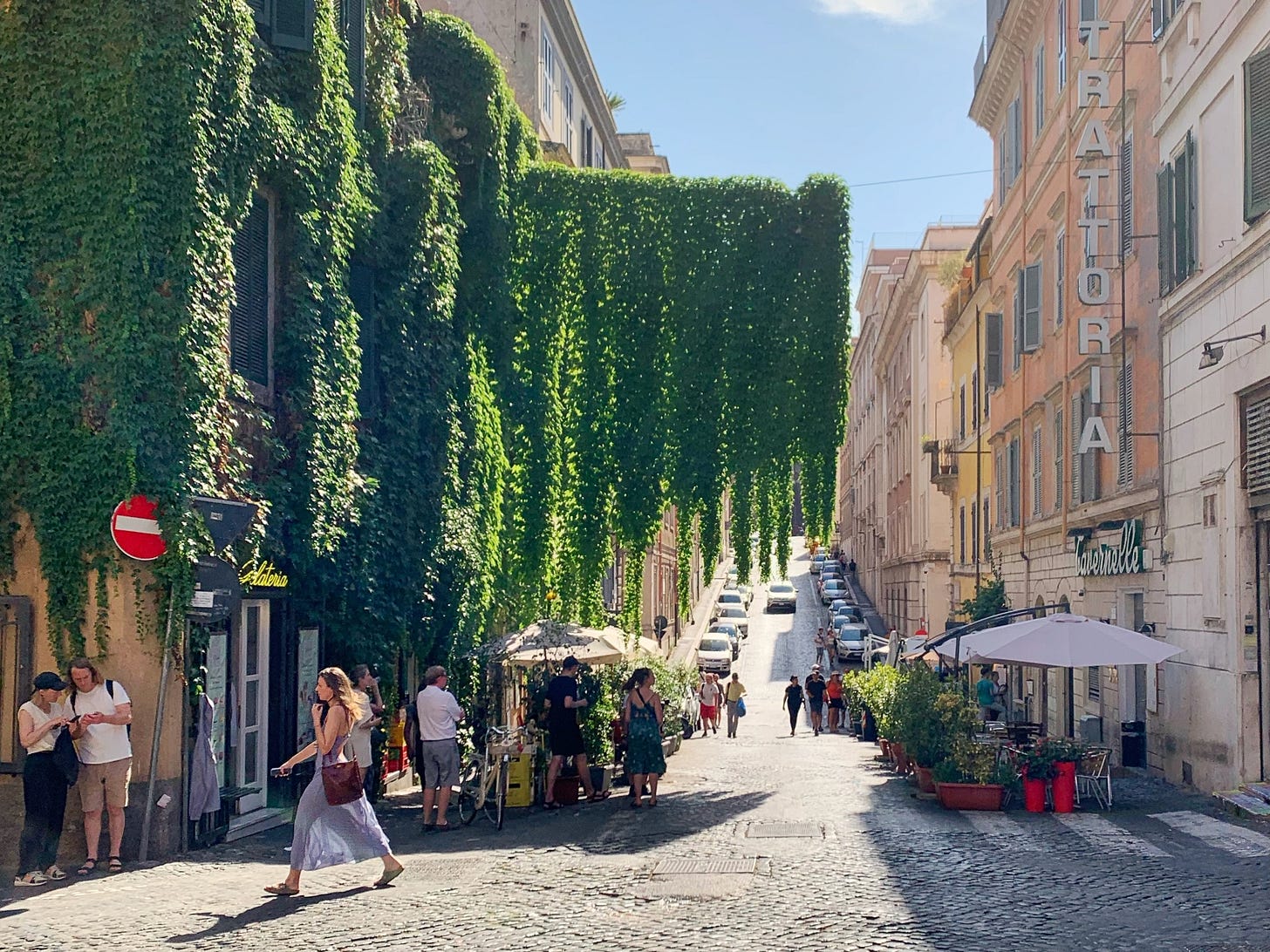Welcome to the New Roman Times’ 72 Hours series! Why 72 hours? Because the New York Times publishes a “36 Hours” series, but in my opinion, 36 hours isn’t nearly enough time to spend in Italy’s greatest cities and most compelling regions. From time to time, I’ll spotlight popular destinations like Milan, Florence, the Amalfi Coast and Capri for paid subscribers. Have a place you’d like a 72 hours guide to? Email newromantimes@substack.com or leave a comment here!
I might be a bit biased, but I don’t really think 72 hours is enough time to spend in Rome—let alone 36 hours. I’ve been living here continuously for 4.5 years (and I spent two years here between college and graduate school) and I still haven’t seen all the highlights. Rome is a city that demands your time—in part because there are a lot of things to see and do and also because part of the joy of being here is slowing down and enjoying life the way Romans do so well. That said, 72 hours is enough to get a taste of the city—hopefully enough of a taste that it will tantalize and tempt you to return.
I don’t really need to tell you that Rome is a city with more than 2,000 years of history. But one of the things that always drew me to this city is the way the past and the present butt up against each other, creating these fascinating contrasts. On Piazza Augusto Imperatore, for example, you have the ancient Mausoleum of Augustus surrounded by 1930s Rationalist buildings (one of which now houses the Bulgari Hotel), and the Ara Pacis (an ancient monument) inside a sleek contemporary building by Richard Meier. Romans live and breathe history, but Rome is also a bustling modern capital.
I’ve tried to distill the best of Rome into an itinerary that’s actually doable in 72 hours, taking into account the things that first-time visitors would want to see but also offering alternatives and adding in some hidden gems, including the restaurants you’ll want to book in advance, the best gelato near Piazza Navona, and the cocktail bar with the best views of the Colosseum.
DAY 1: Ancient Rome
For first-time visitors to Rome, a visit to the Colosseum and Roman Forum is a must, but there are plenty of other archeological sites to dig into on repeat visits. So on your first day in the Eternal City, start where it all began and then spend some time in one of the city’s coolest neighborhoods just up the hill.
10 a.m. - Colazione and the Colosseum
Start your morning the Roman way: with a cappuccino and maritozzo. Regoli near Piazza Vittorio is famous for these cream-filled buns and they always sell out, so get there early. From there, it’s a 15-minute walk to the Colosseum, the Roman Forum, and the Palatine Hill, which are all included on the same ticket. Make sure you book in advance—timed tickets for the Colosseum go on sale a month in advance and they must be reserved with your name (this is a new regulation put in place to prevent scalpers from scooping up all the tickets and reselling them at a premium).
If you’ve already checked those monuments off your list, visit the Domus Aurea (Nero’s pleasure palace) or Trajan’s Markets instead. There are more than enough ancient sites to keep you coming back again and again.
1 p.m. - Lunch and Shopping in Monti
In the afternoon, head up the hill to Monti, one of Rome’s most picturesque neighborhoods. Grab a table at beloved wine bar Ai Tre Scalini for a light lunch or stop by Zia Rosetta for a gourmet sandwich before browsing the shops on nearby Via del Boschetto and Via Urbana.
Monti is full of independent boutiques selling everything from raw vegan chocolate to handmade jewelry by local artisans. A few favorites: Art Privé, where jeweler Antonio made a pair of earrings that I designed for my wedding; Kokoro, where I had a top made to measure; and Grezzo Raw Chocolate, where the vegan and gluten-free chocolate is surprisingly delicious.
6:30 p.m. - Aperitivo with a view
Head back down the hill to take in the Colosseum from a different angle. The Court inside the Palazzo Manfredi Hotel has dead-on views of the ancient amphitheater. Cocktails are expensive (around €25), but they’re expertly shaken by a team of skilled bartenders and come with a bevy of gourmet bites from the hotel’s Michelin-starred restaurant.
Keep reading with a 7-day free trial
Subscribe to The New Roman Times to keep reading this post and get 7 days of free access to the full post archives.







